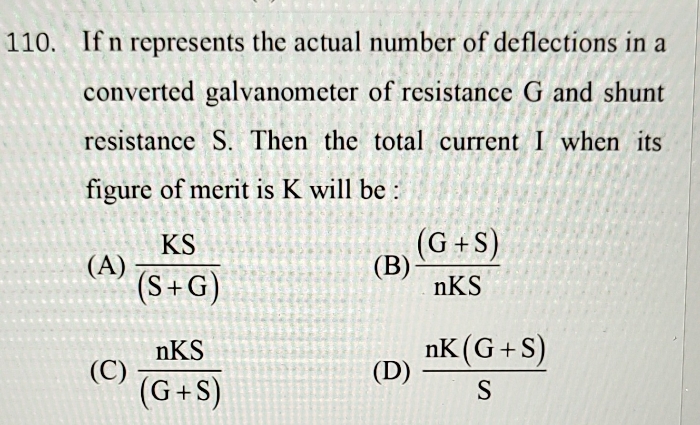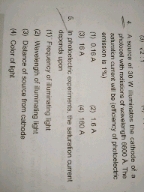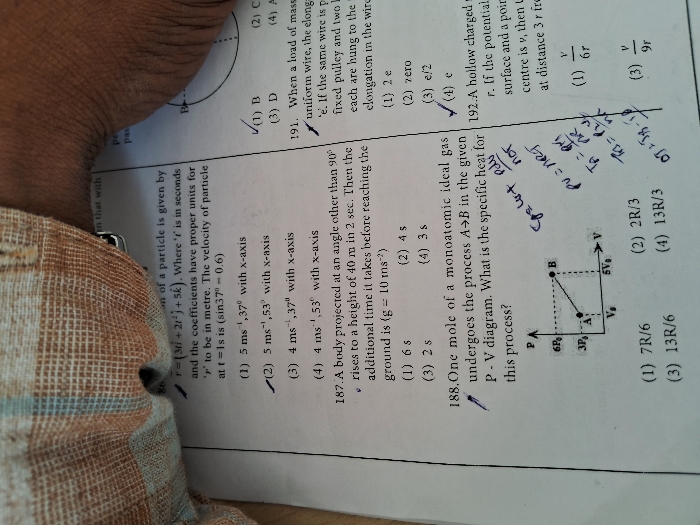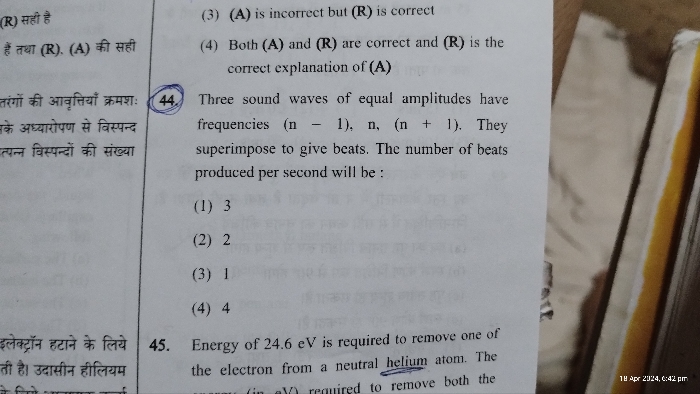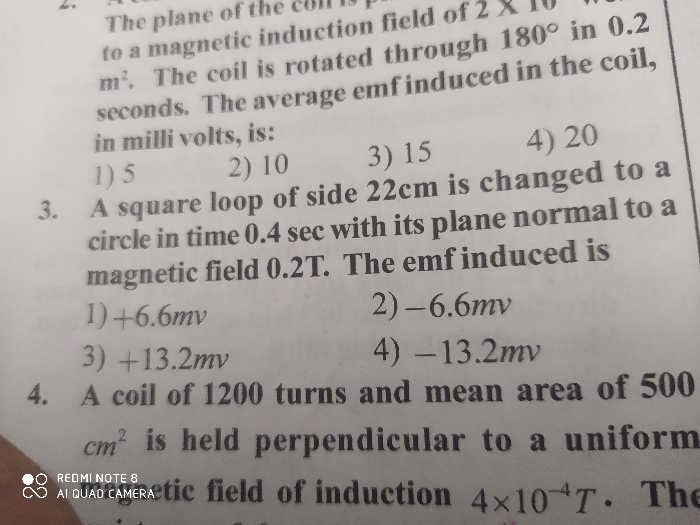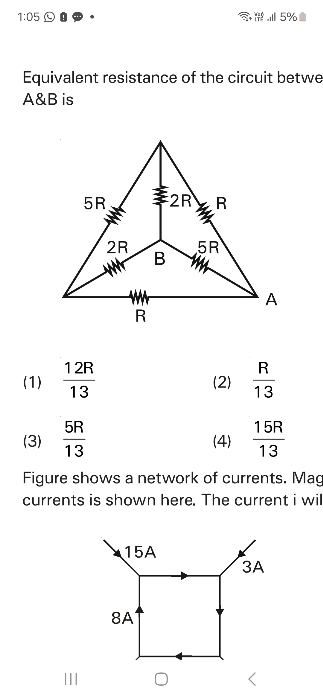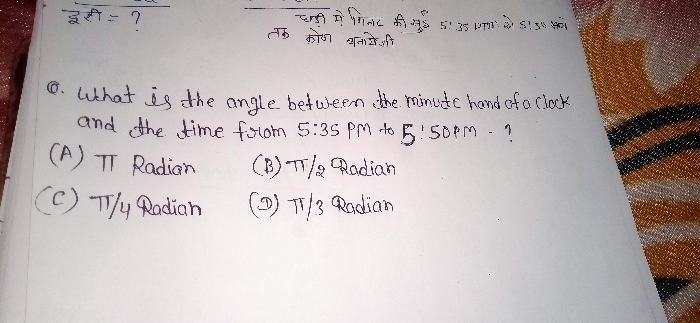NEET Class neet Answered
Two identical helium filled ballons A and B fastened to a weight of 5g by threads floats in equilibrium as shown in figure.Calculate the charge on each ballons,assuming that they carry equal charges.please explain .Ans is 5×10-7C
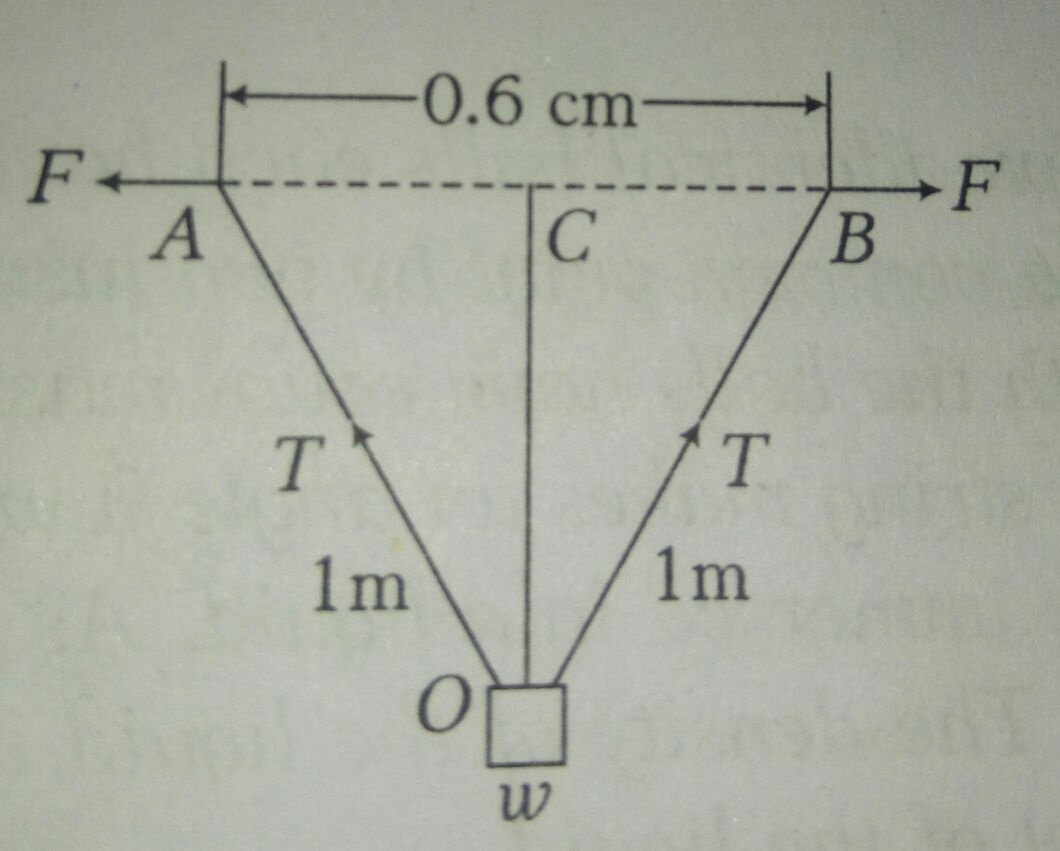
Asked by valavanvino1011 | 25 Apr, 2019, 12:33: AM
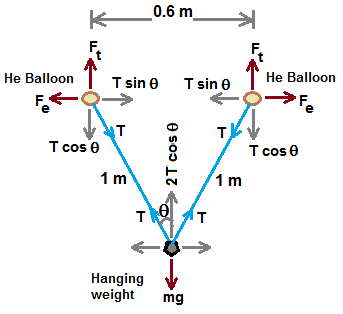
Figure shows the forces acting on hanging weight and He Balloons.
Fe is the repulsive electrostatic force acting onthe charged baloons .
Ft is the upthrust experienced by baloons due to bouyancy. Tension forces acting on the strings is also shown in figure.
It can be seen from figure, net vertical component of Tension is balanced by weight of the hanging mass.
Hence we have, 2 T cosθ = m g or T = mg / (2 cosθ) ...................(1)
at He balloon, horizontal component of Tension is balanced by electrostatic force,
Hence we have, Fe = T sinθ .................(2)
Using eqn.(1), Eqn.(2) is written as, Fe =  .........................(3)
.........................(3)
 .........................(3)
.........................(3)where q is the charge on each balloon, m is mass of hanging object, r is the distance between balloon,
g is acceleration due to gravity, ε0 is the permitivity of free space.
we can see from figure, tanθ = 

By substituting all the values in eqn.(3), we get q = 5.5×10-7 C
(distance between balloons is assumed as 0.6 m, not 0.6 cm as shown in figure.
0.6 cm or 6 mm distance between balloons, precisely between centres of balloons, is negligibly small distance , practically not possible )
Answered by Thiyagarajan K | 25 Apr, 2019, 10:31: AM
Application Videos
NEET neet - Physics
Asked by hardikmittal25 | 03 May, 2024, 02:57: PM
NEET neet - Physics
Asked by sa1033278 | 02 May, 2024, 07:37: PM
NEET neet - Physics
Asked by bidyutpravarout79 | 26 Apr, 2024, 09:40: PM
NEET neet - Physics
Asked by ramanjaneyuluoguru | 25 Apr, 2024, 04:18: PM
NEET neet - Physics
Asked by shatakshibhatt9 | 20 Apr, 2024, 07:52: PM
NEET neet - Physics
Asked by praveenpriya000079 | 18 Apr, 2024, 07:24: AM
NEET neet - Physics
Asked by gouranshi84 | 17 Apr, 2024, 05:23: PM
NEET neet - Physics
Asked by sojusvi | 17 Apr, 2024, 01:12: PM


